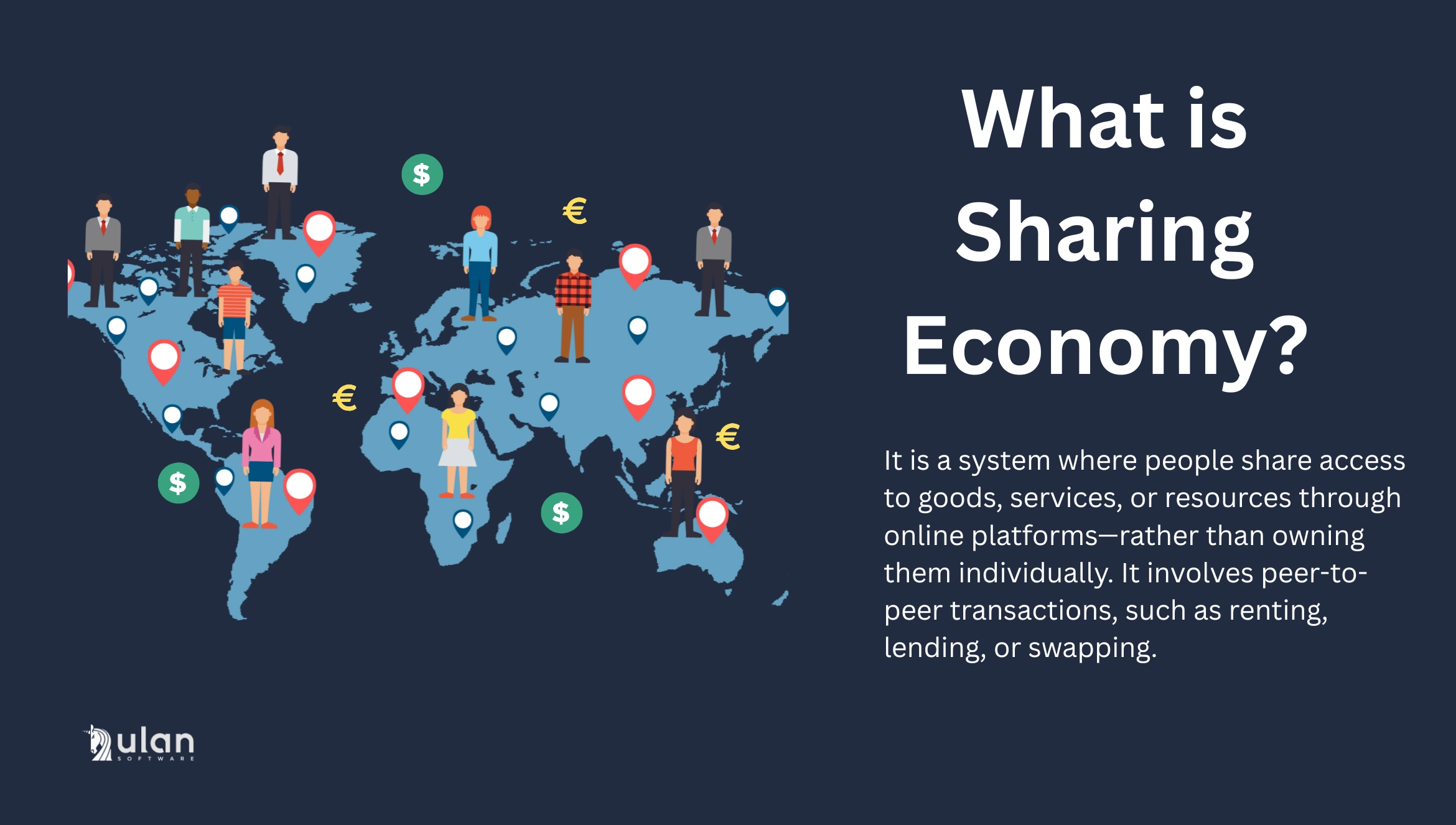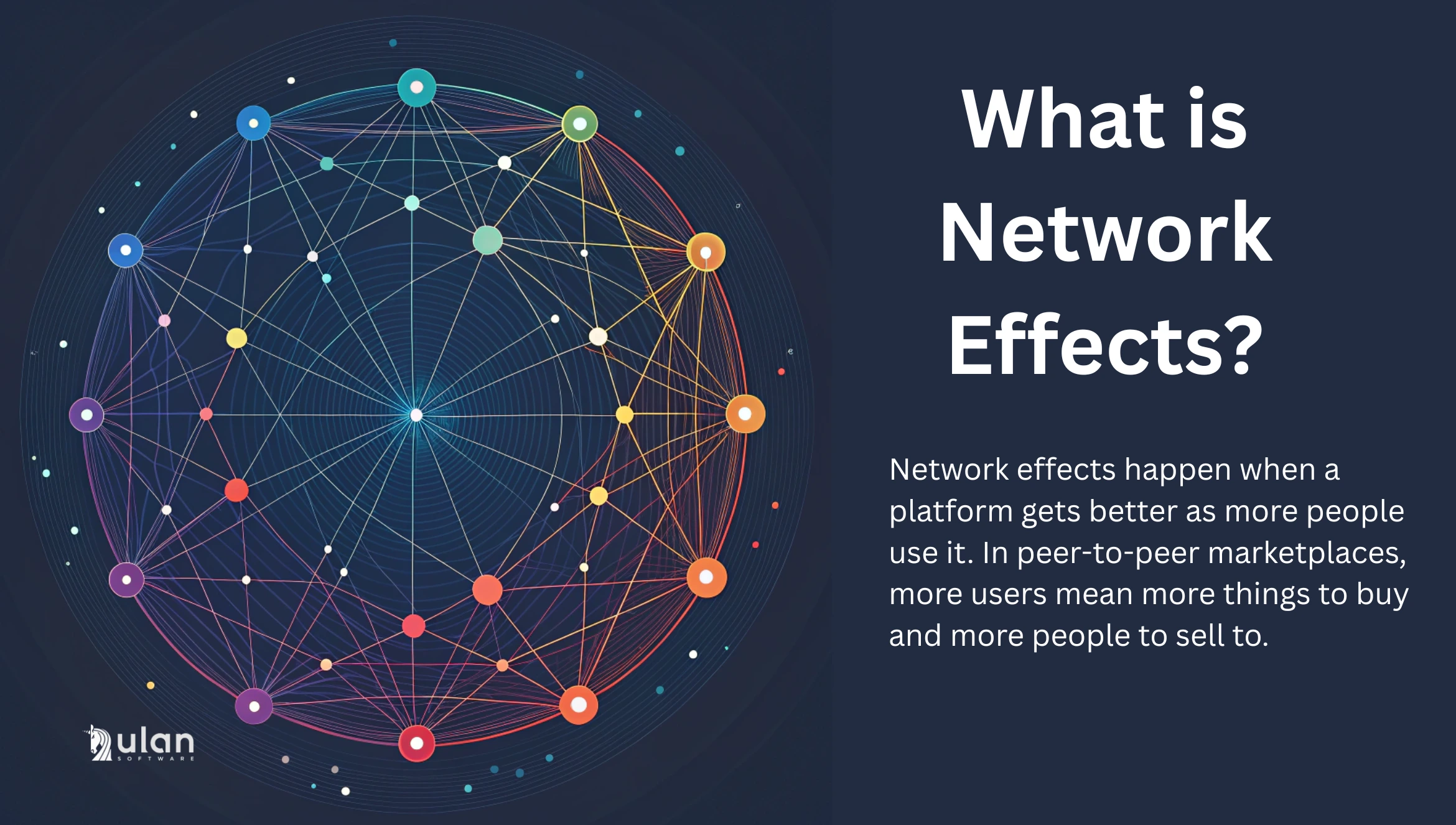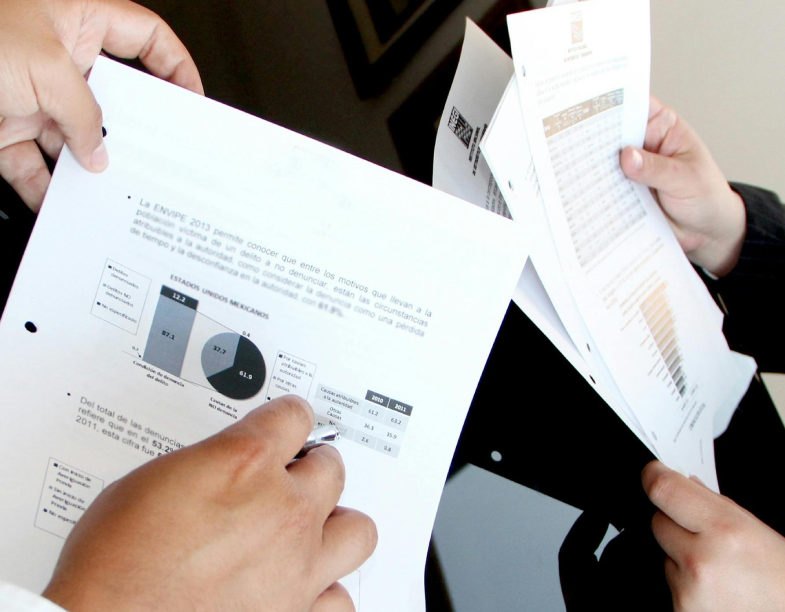Back to all Articles
What Is P2P (Peer-to-Peer) Marketplace and How Does It Work?

Twenty years ago, trusting a stranger online seemed impossible. Today, it fuels entire industries. Peer-to-peer (P2P) marketplaces let people buy, sell, rent, or share directly through online platforms. Instead of traditional stores, users handle transactions themselves on a peer-to-peer platform.
This approach has created global brands like Airbnb, Uber, and eBay. They all shaped the concept of the sharing economy, where trust between strangers becomes currency.
These platforms transform ordinary tasks like booking rooms, arranging rides, or trading secondhand goods into peer to peer transactions.
In this article, we explain how a peer-to-peer marketplace platform functions, provide real P2P examples, and discuss new trends to keep an eye on.
What is a Peer-to-Peer Marketplace?
P2P Marketplace Definition
A peer-to-peer (P2P) marketplace is an online platform connecting people for buying, selling, or sharing. Instead of one business selling to many customers, users trade with each other. The platform acts as an intermediary. It provides tools like listings, searches, payment processing, and dispute resolution.
In other words, a peer-to-peer marketplace platform lets anyone become a seller or buyer. A P2P marketplace does not usually own the items or services offered. Its main job is helping individuals connect and transact with each other.
Key Characteristics of P2P Marketplaces:
It is a Two-Sided. A P2P marketplace has at least two user groups: sellers (providers) and buyers (consumers). Very often, one person can play both roles. For example, on Airbnb, you might rent out your home one day and book someone else's home the next. Like on eBay, today's buyer can become tomorrow's seller.
The platform acts as a mediator. A peer-to-peer marketplace platform provides the technical framework for transactions. It offers tools for discovery, booking, payment, and dispute resolution.
However, the transaction itself occurs between users. The platform earns revenue by charging fees or commissions on each exchange.
Supply is decentralized. P2P marketplaces rely on users to supply goods and services, unlike traditional businesses that store inventory. This creates a decentralized model in which the platform scales through user participation.
This model also reduces barriers to entry by allowing people to monetize unused assets or skills.
Trust is the main fuel for the platform. Trust is crucial since transactions occur between strangers. Most P2P platforms use trust-building features such as user ratings, reviews, identity verification, and secure messaging.
Some platforms even offer insurance or transaction guarantees to build user confidence.
Peer-to-peer marketplaces exist across various industries. Popular P2P examples are eBay, Airbnb, Uber , Lyft, Etsy, Upwork and more. All of them are sharing the common concept. People are connecting through technology.
In contrast to B2B or B2C marketplaces, P2P platforms allow users to act as both buyers and sellers, often switching roles depending on the transaction.
Where Did the Idea of P2P Marketplaces Come From?
Let’s take a step back and look at how the idea of peer-to-peer marketplaces came to life. Interested to learn how it grew into a major part of the digital economy?
The concept wasn’t born online. Traditionally, people found used bikes, jobs, or rental rooms through community bulletin boards or newspapers. These were early forms of peer-to-peer exchange: offline, local, and built on trust.
Then the internet arrived and changed everything. It made these exchanges faster, broader, and scalable. What started as simple listings turned into global platforms used by millions.
Here's how that transformation progressed:
-> 1990s: In 1995, eBay launched as “AuctionWeb". This allowed users to auction personal items to each other. It proved that people were willing to buy from strangers. Craigslist also launched in 1995. The platform offered local classified listings for jobs, rentals, and used goods. These platforms introduced the core concept: users transacting without a central seller.
-> 2000s: Platforms like Etsy (2005) focused on specific verticals, such as handmade goods. StubHub (2000) let fans resell tickets. Amazon opened its platform to individuals alongside businesses. PayPal was a turning point. Acquired by eBay in 2002, it introduced secure digital payments between strangers.
-> 2010s: Smartphones, GPS, and mobile apps transformed P2P platforms into daily-use services. Airbnb (2008), Uber (2009), and TaskRabbit (2008) made it easy for anyone to rent a room, drive a passenger, or offer a skill. Peer-to-peer buying became mainstream. Peer-to-peer buying became mainstream.
This decade popularized the term sharing economy. This is the idea of turning personal assets into income. Platforms like Kickstarter and Upwork extended P2P into finance, crowdfunding, and freelance work.

-> Late 2010s to 2020s: Still, growth continued. Vinted, Turo, BlaBlaCar, and Rover gained traction in fashion, transport, and pet care. Facebook launched Marketplace in 2016. It used social networks to enable peer-to-peer platforms at local scale. Blockchain experiments like OpenBazaar explored decentralized versions of P2P exchange. NFT platforms like OpenSea took a similar approach with digital assets.
-> COVID-19 and the Modern P2P Landscape: The pandemic disrupted some platforms and accelerated others. Travel apps like Airbnb saw losses, then sharp rebounds. Grocery and delivery services boomed. Remote work fueled demand for freelance marketplaces. By 2023, many platforms posted record growth. Airbnb went public in 2020. Uber diversified through Uber Eats. Upwork expanded as remote jobs gained acceptance. Globally, the peer-to-peer economy continues to evolve.
How Does a Peer-to-Peer Marketplace Work?
While P2P marketplaces operate across different industries, they follow a similar structure. Here’s a breakdown of how a typical p2p marketplace platform works.
At the core there is a digital platform, usually a web or mobile. At a glance, peer-to-peer marketplaces seem simple: one person lists, another buys. But behind every smooth transaction is a complex system of design choices that make it all possible.
Every P2P platform relies on the same foundation: the platform is not the seller. Its role is to make transactions between strangers efficient, safe, and repeatable at scale.
This begins with user onboarding. Profiles, identity verification, and clear terms of use are essential here.
After onboarding, the focus shifts to listings and discovery. A seller creates an offer. It could be a product for sale, a room to rent, or a service to provide. This include title, description, photos, location, availability, tags. So the system can show it to the right people.
The challenge here isn’t listing management, but supply-demand matching. Without discovery tools, users leave before they find what they need. That’s why most platforms work on search and filtering, as well as recommendation engines.
Once a match is made, the next step is managing risk.
Platforms solve this through payment architecture. Most rely on an escrow model. It happens when the buyer pays upfront, the funds are held, and payment is only released after delivery or completion.
This model protects both sides. Buyers know their money is safe, and sellers know the payment exists. It also allows the platform to step in if something goes wrong.
After the transaction, feedback systems come into play. Ratings, reviews, and performance history build a user's reputation over time. This reputation becomes a key driver of future transactions. It also helps the platform maintain quality without direct oversight.
At a deeper level, trust and safety systems run in the background. Fraud detection, content moderation, and sometimes even insurance products support the user experience. These are operational necessities.
Most platforms charge fees on transactions. Some from the seller, some from the buyer, some from both. The platform earns only when users succeed. If you're curious how different marketplaces make money, here's a breakdown of the most common monetization models.
P2P marketplaces depend on network effects. As more users join, more listings appear. More listings attract more buyers, and more buyers attract new sellers. This flywheel creates liquidity.

Examples of P2P Marketplaces
Peer-to-peer marketplaces are all around us. Let’s look at real-world examples across different industries to see how this model works.
Buying, Selling, and Trading
One of the first peer-to-peer marketplaces to gain global traction was eBay. Launched in 1995, it began as an auction site for individuals. Today, it connects over 130 million buyers with millions of sellers, enabling over $73 billion in yearly transactions.
Etsy followed in 2005 with a more focused vision. It gave artists, crafters, and small businesses a global stage. Shoppers visit Etsy for unique, handmade, or vintage items they can’t find in stores.
Facebook Marketplace took a different route. Built into the Facebook app, it allows neighbors to trade anything, from bikes to books. Its success shows how peer marketplaces can grow fast by plugging into an existing network.
Travel and Lodging
Airbnb changed the way people travel. Since 2008, it has allowed regular people to rent out rooms or homes to visitors. Travelers enjoy local, often cheaper stays. Hosts earn extra income from unused space. The platform now spans over 220 regions worldwide.
Vrbo offers a similar model focused on full-home rentals, ideal for families or group travel. Both platforms showed that trust, mutual reviews, and simple tools can turn anyone into a host.
Rida Sharing
Uber and Lyft connect drivers with passengers using an app. Drivers use their own cars and work on their own time. The platform handles payments, routes, and ratings. This approach redefined personal transport — all without owning a single car.
In Europe, BlaBlaCar offers long-distance ride-sharing. Drivers list upcoming trips, and passengers join for a shared fee. It’s a way to split fuel costs while filling empty seats.
Turo and Getaround extend the model to car rentals. Instead of using a rental agency, you borrow a neighbor’s car. These platforms turn idle vehicles into short-term rentals.
Local and Global Services
Upwork and Fiverr are peer platforms for freelance work. Businesses post jobs, and freelancers submit proposals. Designers, writers, developers, and marketers all offer services. Payments and deadlines are managed through the platform. This makes global hiring easy for small teams and solo founders.
Locally, apps like TaskRabbit and Thumbtack connect people with “Taskers”.
Peer-to-Peer Financing
Peer lending platforms like LendingClub and Prosper match borrowers with individual lenders. Borrowers apply online, and investors choose loans to fund. The platform handles the legal side and loan servicing. It's a way to bypass banks and still lend or borrow money.
Kickstarter and Indiegogo do something similar with ideas. Creators post projects, and backers pledge money. Some support to get early access to a product, others want to see the idea come to life. This peer funding model brought new life to everything from indie films to smart gadgets.
Each of these examples serves a different need. But they all follow the same core - connect people through a platform, let them transact, and build trust through clear rules and shared reviews.
6 Key Trends in P2P Marketplaces
- Rapid Growth and Global Adoption. Peer-to-peer platforms are expanding fast. By 2032, the sector is projected to reach $1.7 trillion. The strongest growth is in Asia, Africa, and Latin America.
- Rise of Niche and Local Platforms. Hyper-focused marketplaces are emerging — from tool sharing and tutoring to peer energy trading. This type of marketplace engine often serve tight communities or specific industries.
- Blockchain and Decentralization. Some startups are using blockchain to replace central control with smart contracts. These systems aim to lower fees and give users more ownership, though challenges around trust and usability remain.
- AI-Powered Matching. AI improves search results, detects fraud, and filters reviews. Machine learning helps match users faster and resolve issues through smart support tools.
- Platform Consolidation and Co-ops. While big platforms like Uber and Airbnb expand into new services, others are exploring cooperative models.
- Focus on Sustainability. New platforms are tackling waste, promoting reuse, or supporting local aid. Peer-to-peer tools are being built with climate and community in mind.
Key Takeaways
What started as strangers trading collectibles online has grown into a global framework for how we rent homes, share rides, hire talent, and crowdfund ideas.
As these platforms keep evolving, they’ll continue to blur the line between user and entrepreneur. One listing, one ride, one transaction at a time, the peer-to-peer economy is rewriting the rules of commerce.


